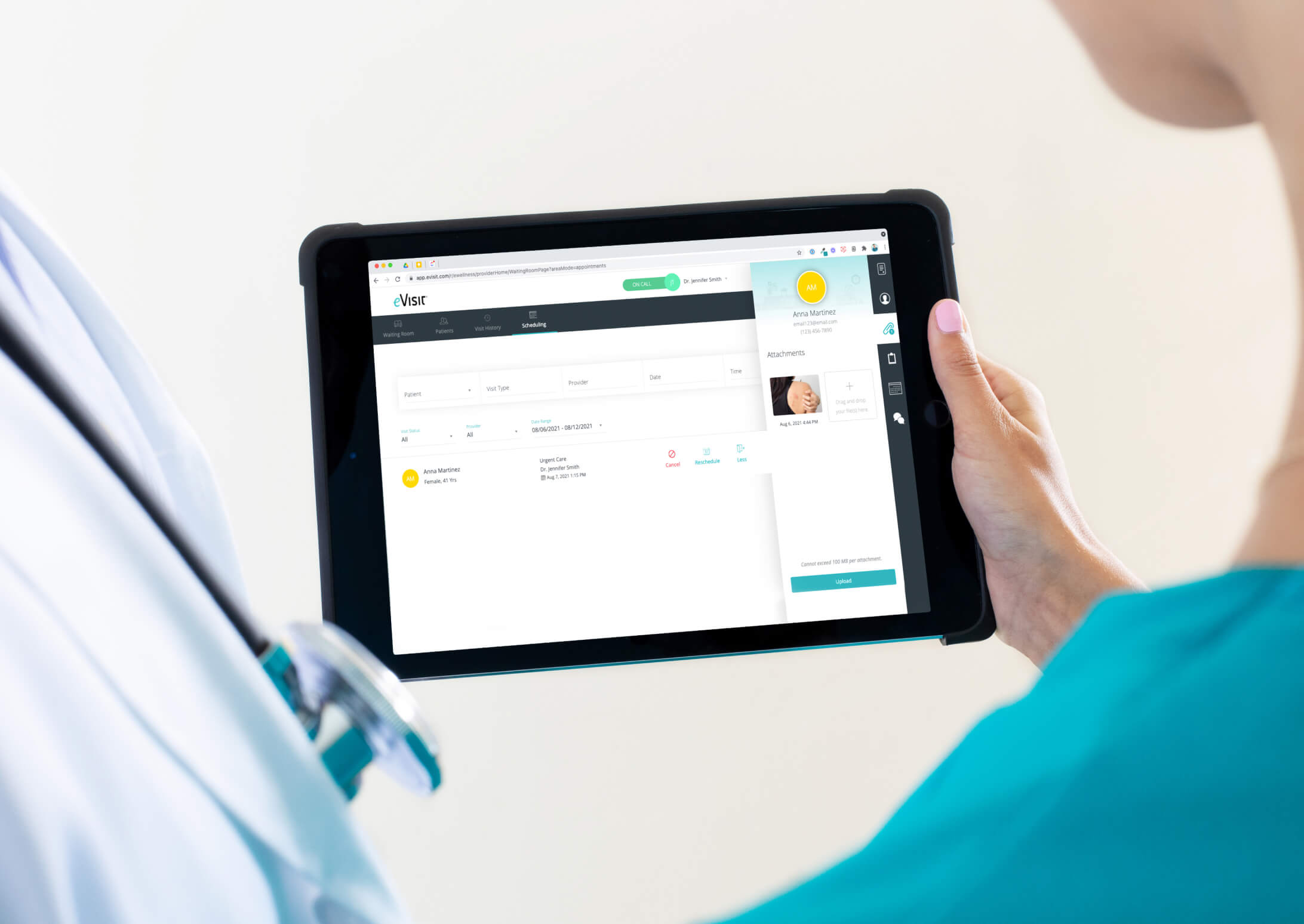Telehealth Systems
Telehealth Kiosks
Telehealth systems used by retail clinics and employers sometimes require installation of a telehealth kiosk. A telehealth kiosk is a small physical booth (think photobooth), usually with a curtain or door for privacy. Each kiosk usually holds a computer, a monitor, a webcam, a microphone, and a variety of mobile medical devices for capturing basic medical data (like blood pressure or heart rate). The idea behind this telehealth system is that patients can go to a convenient location, either at their local drugstore or an on-site at work, and get access to a range of medical specialists. This booth eliminates the need for patients to purchase or set-up any telemedicine equipment themselves.
Webcams and Digital Cameras
Telehealth used to be practiced via telephone, without any visual medical data. Now, with the accessibility of the internet and high-quality cameras, telehealth systems rely heavily on remotely sharing medical images. Real-time telehealth systems, for instance, require a webcam to connect patients and providers (or providers with a referring specialist) through 2-way video. Some telehealth systems might incorporate a simple digital camera that allows patients to take a photo of a rash, and infection, or a skin abnormality and share it securely with their doctor.
Other telehealth systems, especially store-and-forward solutions, depend on high-tech cameras embedded into medical scopes to capture and share high-resolution patient photos.
Telehealth Stations and Carts
Telehealth systems used by larger health systems often require a cart or mobile telehealth station. The mobile carts are often stocked with everything physicians need to video-conference a consulting specialist, capture and share patient medical data, or check-in on a patient at home or in another facility in real-time. Healthcare providers might bring these carts into a patient’s hospital room to connect with another physician during the patient’s exam. In some cases, a patient recovering from hospitalization or suffering a chronic illness at home might have a telehealth cart set-up so that they have all the equipment they need to connect with their physician remotely.
Telehealth Platforms
Telehealth systems always include a digital platform to access, store, share, and secure patient medical data. Some telehealth platforms are software that needs to be installed on a practice or health system’s local server, and can only be accessed on that network. Cloud-based telehealth platforms, on the other hand, live online and can be accessed from any computer or compatible mobile device with the right login information. Many telehealth platforms also now include a mobile app version that lets users logon via their smartphones while on the go.
You should always consider what features and functions are included in a telemedicine system. Depending on the telehealth system, you might need to purchase several different software packages. For instance, some telehealth systems have completely different platforms for real-time telehealth vs. store-and-forward solutions.
Mobile Medical Devices
Mobile medical devices are an important part of many telehealth systems. A physician visiting a patient’s home or working in a very remote area may rely on mobile medical devices to capture, record, and share important patient health information. Patients that are being remotely monitored usually use some type of mobile medical device in the home, whether it’s a glucose tracker, home blood press sure monitor, or portable ECG monitor. Some telehealth systems might connect with a handheld console, that asks patients questions like “how are you feeling today?” and then transmits the patients’ answers to the provider over an internet connection.
Not all telehealth systems require or integrate with mobile medical devices. They’re most important for remote patient monitoring systems, where patient health information needs to be captured outside a standard medical facility.
Selecting the Right Telehealth Monitoring System for You
The right telehealth system for you depends on many factors: What type of telehealth solution do you need? What can you afford? What will you be using it for?
Watch now: How to Choose the Right Telemedicine Software for Your Practice
Evaluate each telehealth system based on the features and technology it offers. Does it come with a bunch of extra features you don’t need but will be paying for? Is the system overly complicated? Does it require lots of equipment? Don’t forget to consider how much set-up, staff training, and implementation will be required to get the system up and running.


